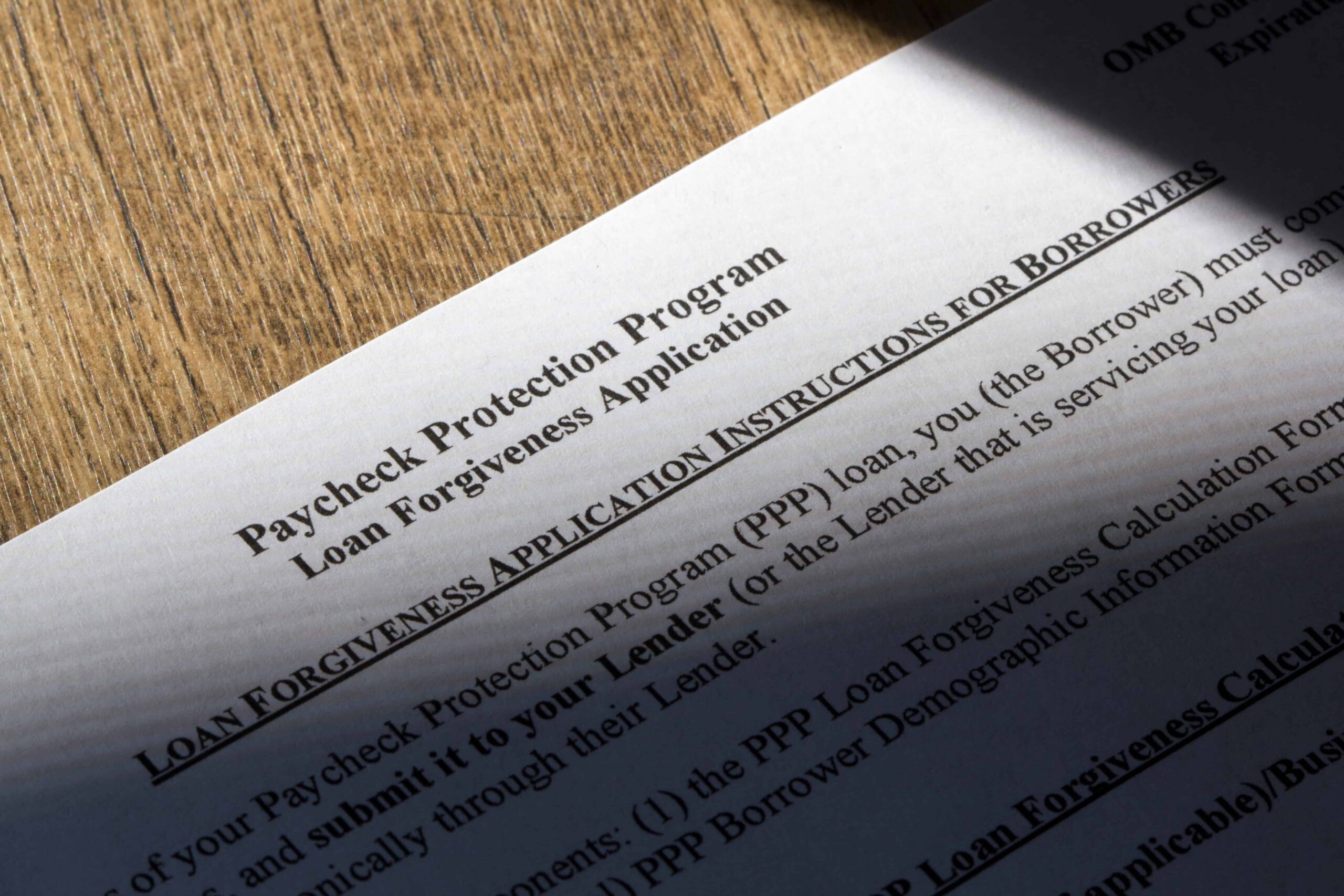
- Home
Why Choose SD
Services

- Services
Tax Services
Tax Planning
Attestation Services
Accounting Services
Business Services
Consultation
Industries We Serve
- Tax Center
Resources
Get In Touch

Paycheck Protection Program: Current FAQ For Small Business Owners About Loan Forgiveness
The financial environment and the current state of the economy are ever-changing. For small business owners navigating these difficult waters, we understand the hardships you may have come across this year. With new rules, requirements, protocols, and processes that change almost every day, we know there may be some lingering questions regarding the Paycheck Protection Program which was enacted by the Coronavirus Aid, Relief, and Economic Security Act (CARES Act) and the related loan forgiveness process.
As of August 11th, 2020, the Small Business Administration alongside the U.S. Treasury issued new guidance through Frequently Asked Questions (FAQs) aimed at helping business owners who participated in the Paycheck Protection Program. These FAQs discuss simplified PPP loan forgiveness guidelines and help borrowers navigate maximum loan forgiveness.
General Loan Forgiveness
Small business owners have been dealt a lot this year, from storefront closings, layoffs, and the paycheck protection program. With the need for clarity on PPP loan forgiveness guidelines, we’re reporting the key highlights of the ten pages of Treasury FAQs below.
- Self-employed individuals, sole proprietors, and independent contractors with no employees at the time of the PPP loan application and who did not include any employee’s salaries in the total of average monthly payroll in the application form automatically qualify to use Form 3508EZ or lender equivalent.
- The FAQ addresses a common question regarding making payments while awaiting forgiveness. The answer is no. If the borrower submits an application within 10 months of the end of the Covered Period, the borrower is not required to make any payments until the loan amount is sent to the lender by the SBA. If the loan is fully forgiven, the borrower will not be responsible for any payments. If only part of the loan is forgiven, the remaining balance must be paid in full by the borrower on or before the maturity date of the loan.
- The Covered Period refers to the 24-week period beginning on the date the PPP loan payment date or if the borrower received the loan before June 5, 2020, the borrower could choose an alternate 8-week period.
Loan Forgiveness Payroll Costs
There are various questions surrounding payroll costs and we’re sharing some of the most important elements of Loan Forgiveness Payroll Costs FAQ:
- Payroll costs that were incurred during the Covered Period or the Alternative Payroll Covered Period but paid after the Covered Period or the Alternative Payroll Covered Period are eligible for loan forgiveness if the payroll costs are paid on or before the next regular payroll date after the Covered Period or Alternative Payroll Covered Period.
- Borrowers must calculate payroll costs for partial pay periods.
- When computing compensation, borrowers need to use the gross amount before deductions and not the net amount paid to the employees.
- Payroll costs include all forms of compensation paid to the employees, including commissions, hazard pay, and tips.
- Expenses for employee group health care benefits that are paid by the employer can be considered payroll costs that are eligible for loan forgiveness. Expenses paid by the employee are not included in payroll costs.
- Employer contributions for retirement benefits that are paid or incurred by the borrower during the Covered Period or Alternative Payroll Covered Period qualify as payroll costs and are eligible for loan forgiveness.
Calculating Non-Payroll Costs
Non-payroll costs include rent, utilities, and interest on loans incurred before the Covered Period, yet paid during, are eligible as part of the loan forgiveness. Other key points to consider include:
- Non-payroll costs incurred during the Covered Period and paid on or before the next regular billing date, even if this date is after the Covered Period are eligible for forgiveness.
- Payments made on recently renewed leases on payments on refinanced mortgage loans are eligible for loan forgiveness if the original lease or mortgage existed before February 15th, 2020, and the payments are made following the renewed lease during the Covered Period.
- Another utility payment eligible for forgiveness includes a “payment for a service for the distribution of . . . transportation” under the CARES Act. This refers to transportation utility fees assessed by state and local governments.
Reduction in Work or Wages
Layoffs and the inability to rehire or hire new employees has brought about many complicated issues within the PPP program. Recent regulations have changed and the FAQ states:
- A borrower may exclude any reduction in FTE (full-time equivalent) employees if the borrower can document the inability to rehire individuals employed on February 15th, 2020, and similarly qualified individuals for unfilled positions on or before December 31st, 2020. Borrowers are required to inform the unemployment insurance office of any rejected rehires within 30 days of the rejection.
- Seasonal employers who use a 12-week period between May 1st, 2019, and September 15th, 2019 to calculate their maximum PPP loan amount must use the same 12-week period as the reference period for the calculation of any reduction in the amount of forgiveness.
- Certain pay reductions that arose for employees during the Covered Period or the Alternative Payroll Covered Period may reduce the amount of loan forgiveness.
If you need assistance with the paycheck protection program or have further questions about the small business loan forgiveness, do not hesitate to contact our team of CPAs. The professionals at SD Associates, P.C. are here to offer you and your small business the best financial services possible to help you successfully navigate these difficult and uncertain times. Call us today at (215) 517-5600 or contact us here.
Navigation
Services
Accolades
